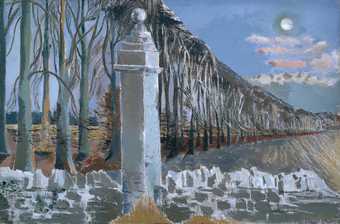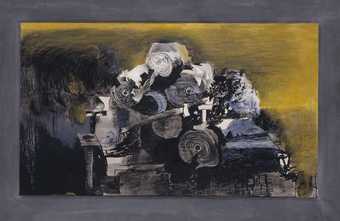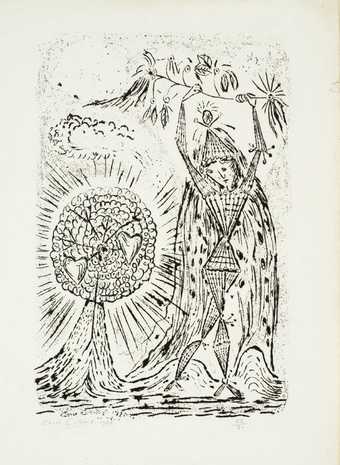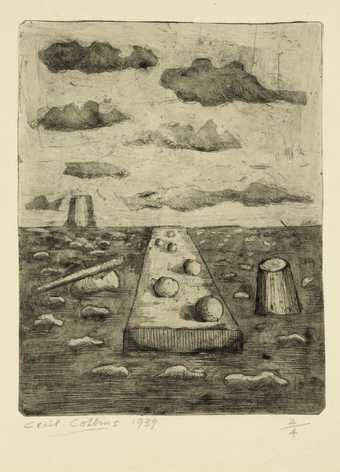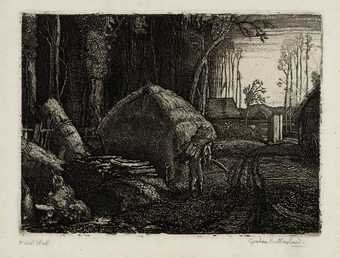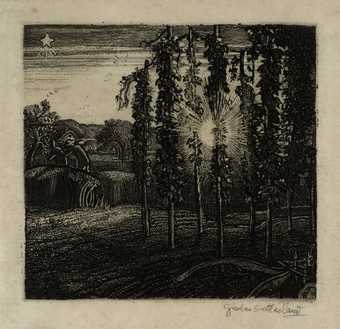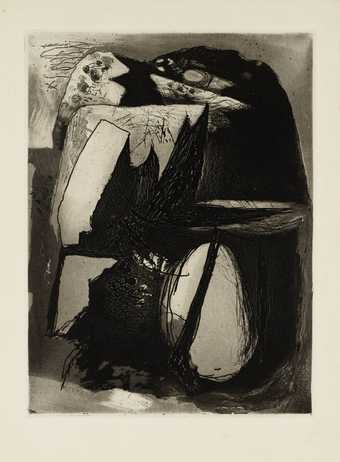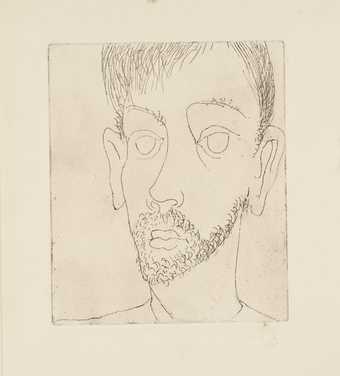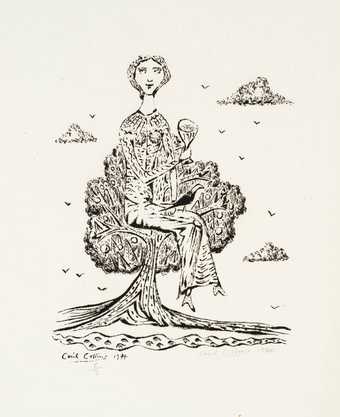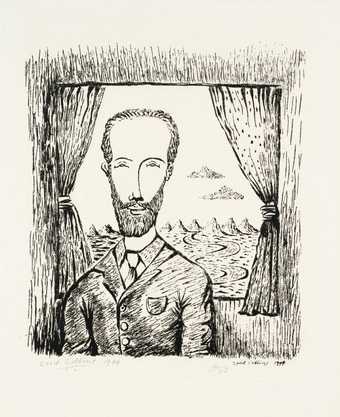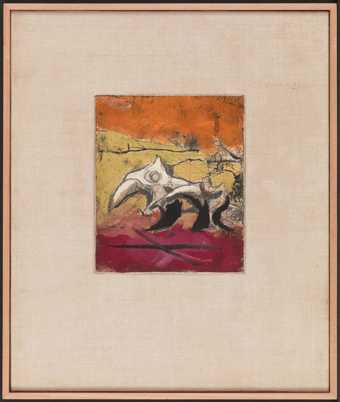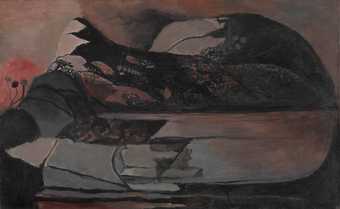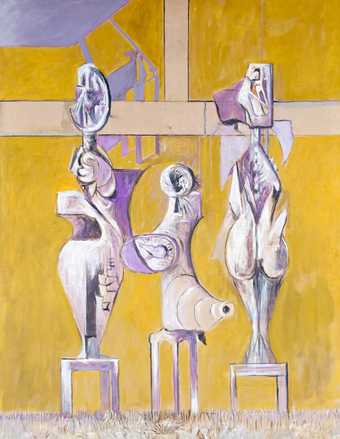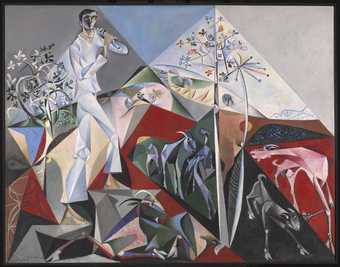
In Tate Britain
Prints and Drawings Room
View by appointment- Artist
- Graham Sutherland OM 1903–1980
- Medium
- Etching on paper
- Dimensions
- Image: 130 × 190 mm
support: 169 × 228 mm - Collection
- Tate
- Acquisition
- Purchased 1970
- Reference
- P07117
Display caption
During the 1920s Sutherland produced a series of prints and drawings directly inspired by the example of Samuel Palmer. The series culminated in this work, whose simplified forms and detailed technique recall Palmer. However, the strange shadows and bizarrely gnarled and twisted tree trunks strike a more personal note. Here Sutherland transforms the Palmeresque evocation of an Arcadian idyll into a more pagan image, replacing traditional Christian symbolism with animistic forces. The sense of brooding drama seen here was developed in Sutherland's landscape paintings of the late 1930s and early 1940s.
Gallery label, August 2004
Does this text contain inaccurate information or language that you feel we should improve or change? We would like to hear from you.
Catalogue entry
Graham Sutherland 1903-1980
P07117 Pastoral 1930
Inscribed ‘Pastoral’ b.l., ‘Graham Sutherland’ b.r. and ‘4’ on verso.
Etching, 5 x 7½ (12.5 x 19) on paper 6¿ x 8¿ (17 x 22.5).
Purchased from Thos. Agnew & Sons (Gytha Trust) 1970.
Coll: Mrs A.M. Bernard-Smith.
Exh: From the Pre-Raphaelites to Picasso II, Agnew, June–July 1970 (116).
Lit: Edward Sackville-West, Graham Sutherland,1943, p.7, repr. pl.2; Douglas Cooper, The Work of Graham Sutherland, 1961, p. 69, repr. pl.4b; Felix H. Man, Graham Sutherland: das graphische Werk 1922–1970, 1970, No. 34, repr.
Sutherland began his career and originally made his reputation as an etcher.’ Pastoral’ was made shortly before he more or less abandoned the medium in 1930, because of the collapse of the market for etchings in England, and turned instead to painting. It is also perhaps his first work to show clear indications of his later, more characteristic style, particularly in its use of dramatic shadows, twisting, monster-like forms and dream-like atmosphere.
According to Felix Man there were four states, but the plate was never published; there exist only a small number of trial proofs printed by the artist. P07117, with a detailed treatment of the sky, foreground areas and fence, is of the final state. In 1970 the plate was still in existence.
Published in The Tate Gallery Report 1970–1972, London 1972.
Explore
- architecture(30,960)
-
- townscapes / man-made features(21,603)
-
- wall(626)
- universal concepts(6,387)
-
- menace(209)
You might like
-
Paul Nash Pillar and Moon
1932–42 -
Paul Nash Landscape from a Dream
1936–8 -
Graham Sutherland OM Devastation, 1941: East End, Burnt Paper Warehouse
1941 -
Cecil Collins The Joy of the Fool
1944 -
Cecil Collins Landscape
1939 -
Graham Sutherland OM Pecken Wood
1925 -
Graham Sutherland OM Cray Fields
1925 -
Graham Sutherland OM Clegyr Boia
1938 -
Michael Ayrton Bearded Head
1939 -
Cecil Collins The Artist’s Wife Seated in a Tree
1944 -
Cecil Collins Self-Portrait
1944 -
Graham Sutherland OM Study for ‘Horned Forms’
1944 -
Graham Sutherland OM Black Landscape
1939–40 -
Graham Sutherland OM Standing Forms II
1952 -
John Craxton Pastoral for P.W.
1948

